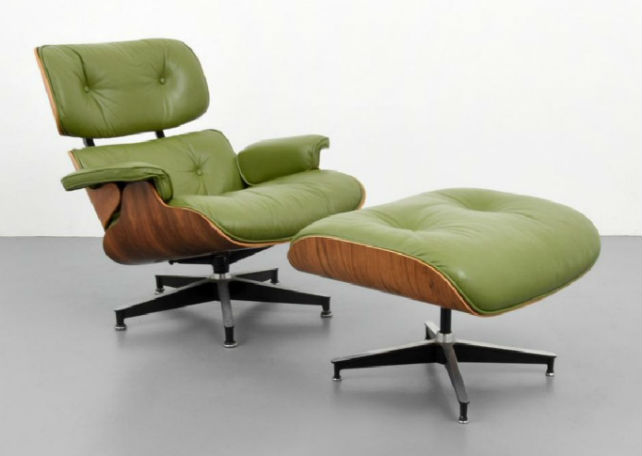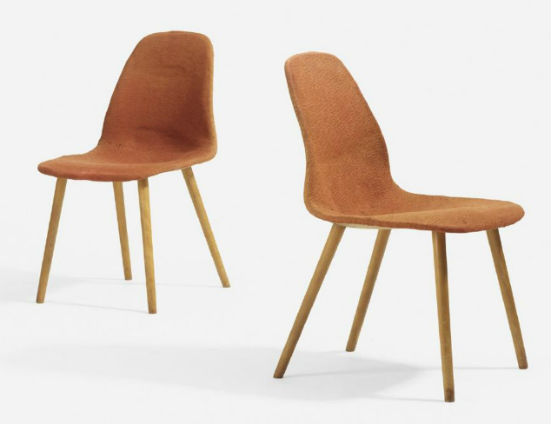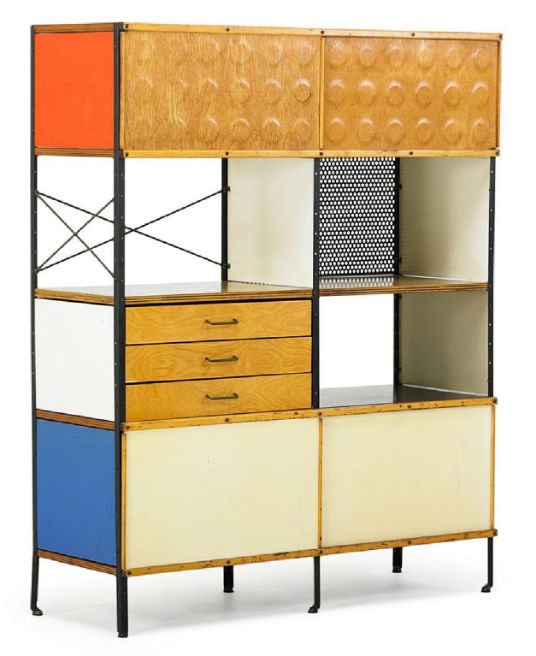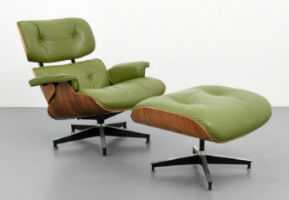
NEW YORK – One of the most iconic designs in furniture is arguably the Eames chair. Its elegance lies in its utter simplicity and brilliant design. As striking as this chair is, however, it is but one of many well-thought-out furniture pieces Charles and Ray Eames designed.
From the Eameses’ molded lounge chairs to compact and modular storage units, tables and compact couches, the common denominator here is the designers’ innate understanding of how a piece should be constructed to best fit its user and incorporating flexibility to allow multiple uses.
Charles Eames (1907-1978) hailed from St. Louis, Missouri. He enrolled at Washington University in St. Louis to study architecture but left after two years. Differing theories claim it was either because of his ardent support of architect Frank Lloyd Wright or due to his simultaneous work as an architect leaving little time for his studies. He opened his own architectural practice in 1930 and was heavily influenced by Eliel Saarinen, whose architect son Eero would become a close friend and colleague. Charles got a fellowship to the Cranbrook Academy of Art in Michigan where he met Ray, his second wife, and went on to head the school’s design department.

Born and raised in Sacramento, California, Bernice Kaiser (1912-1988) originally pursued fashion design at Bennett College in upstate New York. Her family gave her the nickname of Ray-Ray; she later went by Ray. She studied painting in New York City with Hans Hofmann and exhibited her paintings there. After her mother died, she studied at Cranbrook Academy, where she met Charles, helping him and Eero Saarinen in designing items for the Museum of Modern Art’s Organic Furniture design competition; the molded plywood furniture they designed earned two first places.

Charles and Ray moved back to her native California after marrying in 1941 and started experimenting with ways to create three-dimensional molding techniques for plywood to create affordable and comfortable seating, After World War II began, they had to turn their attention temporarily to using their skills to aid the war effort for the U.S. Navy in a variety of projects, including making leg splints.
Revolutionizing furniture design in the 1940s, the husband-and-wife designers found inspiration in nature and organic forms. They created a molded plywood chair for the Herman Miller company in Zeeland, Mich., that was noted for being high quality yet able to be mass-produced, making it affordable. Tweaking their design when plywood as a material did not prove strong enough, they created several variations of the chair (including a leather and plywood version) and debuted a single-shell fiberglass chair in 1950 that molded to the curves of a person’s body. The chair’s shape provided adequate back and seating support, comfortably, without the need for padded upholstery. The fiberglass versions were later replaced with plastic. The chair was so popular that versions of it are still manufactured today and a 1956 example with matching ottoman in rosewood is in the permanent collection of the Museum of Modern Art.

The Eames shell series chairs are easily recognizable for their form as well as their striking color with a strong base color and colored fibers that can be seen in the shell. They made upholstered chairs a few years later with textiles and fabrics curated by Alexander Girard, who became director of design at Herman Miller in 1952. Girard favored primary colors and playful, geometric patterns in everything from wallpaper to furniture. The original Eames shell chairs were available in 11 standard colors and about 18 special-order colors. Standard colors included seafoam green, lemon yellow, red-orange and navy blue. Most striking among its special colors were pink, turquoise, brilliant yellow and kelly green.
“They approached problem-solving as an adventure, combining discipline with a sense of play,” according to commentary on the website of the Eames Foundation in Pacific Palisades, California.
Functionality was at the heart of their designs. Charles Eames believed that pieces that work are superior to those that merely look good.
While best known for their chairs, the Eames introduced functional and economical storage solutions in 1952 with their modular storage units having an industrial style that is still in vogue today. These units, made of plastic-coated plywood, lacquered Masonite and chrome-plated steel framing, were made by Herman Miller through 1955 and again from 1996 to the present. They featured sturdy cabinets, cases and desks, were affordably priced and could be arranged in various ways, featuring open shelving, sliding doors and drawers. They also came in several color combinations in either a “neutral” or “colorful” scheme.

Employing similar technology as their molded plywood chairs, the Eameses also designed a CTM, a molded plywood coffee table that was lightweight and featuring a sleek profile. After several design tweaks, the three-leg CTM was later replaced by a four-leg version that became the standard. For smaller homes and spaces, the Eameses also harnessed their minimalist sensibilities to design a sofa that despite its 6-foot length, had a compact and slender profile to preserve a room’s scale without overpowering it.
Great design is timeless, not trendy and Eames furniture certainly fits the bill. Their designs are so collectible today because they are beautiful yet functional as well as truly comfortable.



